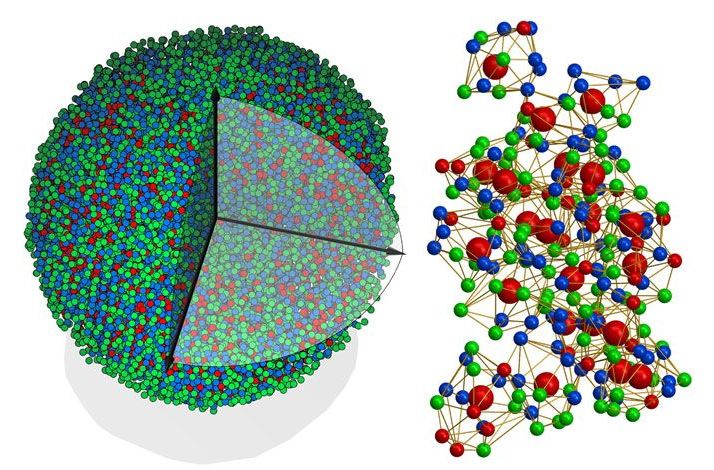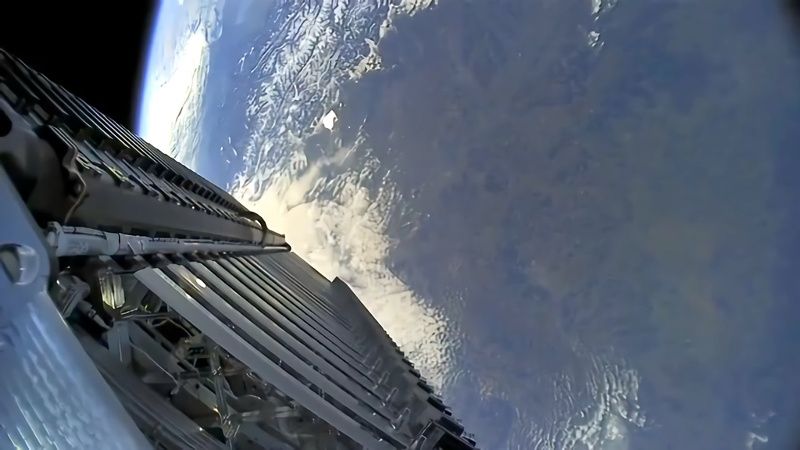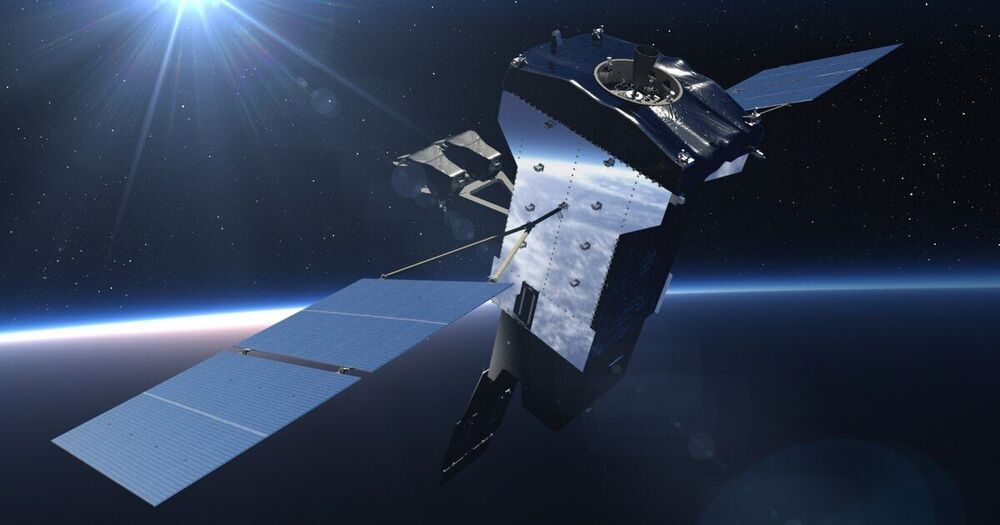Researchers at the University of California, Los Angeles (UCLA), have solved a 100-year-old problem in science – capturing the 3D structure of an amorphous solid, in this case metallic glass.
Elon Musk finally got to show off his monkey.
Neuralink, a company founded by Musk that is developing artificial-intelligence-powered microchips to go in people’s brains, released a video Thursday appearing to show a macaque using the tech to play video games, including “Pong.”
Musk has boasted about Neuralink’s tests on primates before, but this is the first time the company has put one on display. During a presentation in 2019, Musk said the company had enabled a monkey to “control a computer with its brain.”
A few weeks back we brought word that Reddit users [derekcz] and [Xerbot] had managed to receive the 2232.5 MHz telemetry downlink from a Falcon 9 upper stage and pull out some interesting plain-text strings. With further software fiddling, the vehicle’s video streams were decoded, resulting in some absolutely breathtaking shots of the rocket and its payload from low Earth orbit.
Unfortunately, it looks like those heady days are now over, as [derekcz] reports the downlink from the latest Falcon 9 mission was nothing but intelligible noise. Since the hardware and software haven’t changed on his side, the only logical conclusion is that SpaceX wasn’t too happy about radio amateurs listening in on their rocket and decided to employ some form of encryption.
Since this data has apparently been broadcast out in the clear for nearly a decade before anyone on the ground noticed, it’s easy to see this as an overreaction. After all, what’s the harm in a few geeks with hacked together antennas getting a peek at a stack of Starlink satellites? [derekcz] even mused that allowing hobbyists to capture these space views might earn the company some positive buzz, something Elon Musk never seems to get enough of.
About a year ago, Honeywell announced that it had entered the quantum computing race with a technology that was different from anything else on the market. The company claimed that because the performance of its qubits was so superior to those of its competitors, its computer could do better on a key quantum computing benchmark than quantum computers with far more qubits.
Now, roughly a year later, the company finally released a paper describing the feat in detail. But in the meantime, the competitive landscape has shifted considerably.
SpaceX’s Falcon 9 first stage landed on the “Of Course I Still Love You” drone ship in the Atlantic Ocean on April 7, 2021 shortly after launching 60 Starlink satellites. It was the “79th recovery of a orbital-class rocket,” according to SpaceX. See the rocket launch: https://www.space.com/spacex-starlink-23-satellite-mission-launch-rocket-landing.
Credit: SpaceX
Watch a Soyuz MS-18 spacecraft lift off on a two-orbit, three-hour journey to the International Space Station! NASA astronaut Mark Vande Hei and cosmonauts Oleg Novitskiy and Pyotr Dubrov of Roscosmos are scheduled to launch at 3:42 a.m. EDT, Friday, April 9, from the Baikonur Cosmodrome in Kazakhstan.
The trio will be part of Expeditions 64 and 65 on the station, where they’ll continue work on hundreds of experiments in biology, biotechnology, physical science, and Earth science. This will be Vande Hei’s second spaceflight, Novitskiy’s third, and Dubrov’s first.
A new retinal implant uses thousands of electrodes to stimulate retinal cells in the blind and produce dotted images.
In a recent paper, Bell argues that the principles of Mario Kart—especially the parts of it that make it so addictive and fun for players—can serve as a helpful guide to create more equitable social and economic programs that would better serve farmers in low-resource, rural regions of the developing world. That’s because, even when you’re doing horribly in Mario Kart—flying off the side of Rainbow Road, for example—the game is designed to keep you in the race.
“Farming is an awful thing to have to do if you don’t want to be a farmer,” Bell says. “You have to be an entrepreneur, you have to be an agronomist, put in a bunch of labor…and in so many parts of the world people are farmers because their parents are farmers and those are the assets and options they had.” This is a common story that Bell has come across many times during research trips to Pakistan, Bangladesh, Cambodia, Malawi, and other countries in southern Africa, and is what largely inspired him to focus his research on policies that could aid in development.
In his new paper, Bell argues that policies that directly provide assistance to farmers in the world’s poorest developing regions could help reduce poverty overall, while increasing sustainable and environmentally friendly practices. Bell says the idea is a lot like the way that Mario Kart gives players falling behind in the race the best power-ups, designed to bump them towards the front of the pack and keep them in the race. Meanwhile, faster players in the front don’t get these same boosts, and instead typically get weaker powers, such as banana peels to trip up a racer behind them or an ink splat to disrupt the other players’ screens. This boosting principle is called “rubber banding,” and it’s what keeps the game fun and interesting, Bell says, since there is always a chance for you to get ahead.
There has not been enough progress in our understanding of the basic mechanisms underlying psychosis. Studying psychotic disorders in animal models is difficult because the diagnosis relies on self-reported symptoms that can only be assessed in humans. Schmack et al. developed a paradigm to probe and rigorously measure experimentally controlled hallucinations in rodents (see the Perspective by Matamales). Using dopamine-sensor measurements and circuit and pharmacological manipulations, they demonstrated a brain circuit link between excessive dopamine and hallucination-like experience. This could potentially be useful as a translational model of common psychotic symptoms described in various psychiatric disorders. It may also help in the development of new therapeutic approaches based on anatomically selective modulation of dopamine function.
Science, this issue p. see also p. [33][2]
### INTRODUCTION
The fifth Space Based Infrared System satellite was delivered to Florida ahead of an anticipated May launch.









